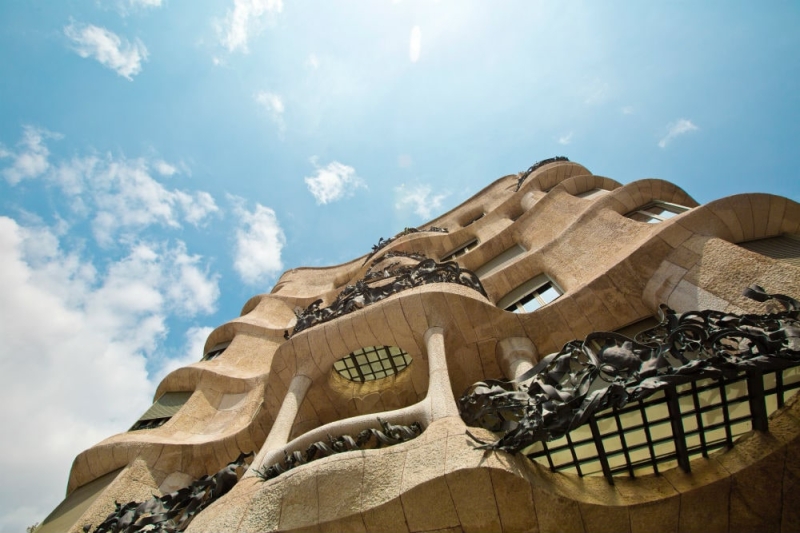
In the “Cudablin” project, we send completely different people on trips at our expense! Anna Frolova visited Barcelona: she tasted food at the Fira de Santa Llucia fair, learned Catalan Christmas traditions and saw the city from above. More details in her report!
I don’t have the habit of whining on Instagram about the weather, but whining in the ears of loved ones offline — why not? When daylight lasts only 4 hours, and the bedroom window is covered with frost in the morning, thoughts of warmer climes become almost obsessive. Who could have known that the Universe would hear me so quickly? The Universe in the person of @onetwotrip, who intended to send me to one of the sunny countries with a special task #Kudablin and with what — you decide! I thought that it was somehow dishonest last time not to give you the opportunity to choose the flight direction for me, so with a clear conscience, come away this time 1. Tel Aviv 2. Athens 3. Barcelona Voting will last until 16.00 tomorrow Moscow time. And may luck be with me
More than spontaneous travel, I love when the heavy burden of choosing between cool and equally cool options can be placed on others. And happiness that @onetwotrip provided such an opportunity! The fate of my journey is again in your hands, and this time I need to decide what special task I have to complete in Barcelona (play a journalist, taster or tour guide?): 1. Organize a tasting of Christmas treats at the Fira de Santa Llucia fair. 2. Feel like a journalist and interview 10 local residents, finding out why you should love Barcelona. 3. Conduct a tour for tourists along the Rambla. Well, I’ll trust Fate again in the person of you, friends P.S. Did you know that I’m actually an introvert?
Unlike late spring and summer – the peak of the tourist season, in the fall the streets of Barcelona are quiet, calm and deserted. On weekends, the city is especially lazy and leisurely – only by midday you can meet the first citizens walking their pets or leisurely sipping coffee in a cozy coffee shop. Unlike some other cities in Spain, in Barcelona, despite the cult of the “endless siesta,” cafes and restaurants are open both during the day and on weekends.
And it’s completely impossible to stay hungry here: croissants with chocolate cost 1 euro, and a large portion of paella costs 6. It’s easy to guess how each of my mornings began with the presence of a bakery just a few steps from the hotel exit.
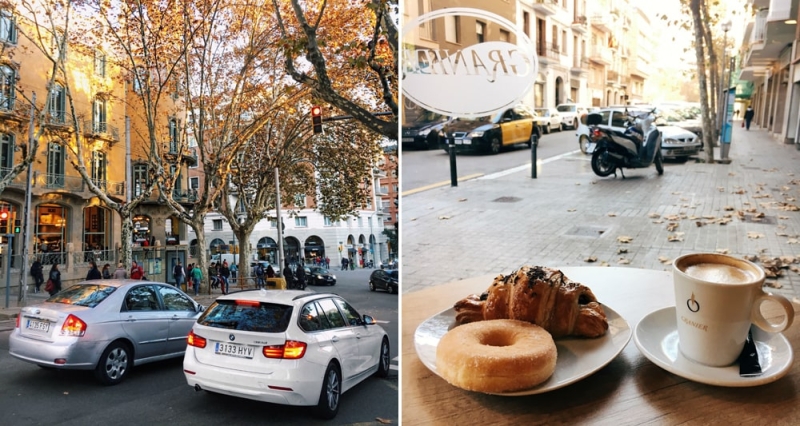
On the first evening I went to the observation deck at Plaza Catalunya. You can get to it by elevator, paying 2 euros, or completely free, going up to the top floor of the shopping center connected to it. To my disappointment, I couldn’t fully enjoy the panorama of the city and Montjuic Mountain – it started to rain.
Despite the rain, winter in Barcelona is good. The temperature outside during the day can rise to +16 °C, and at night drop to +6 °C. What to wear for a walk is up to you; in one subway car I met a group of girls in summer dresses and ballet shoes and several people in down jackets and thick boots. I had heard that Catalans get cold “in winter”, but I had no idea how cold. However, when going to Barcelona, keep in mind that houses and hotels are not heated in the autumn-winter period, and the room can be quite cold.
The next day I was going to climb to the very top of Barcelona – the observation deck of the Temple of the Sacred Heart on Mount Tibidabo, which is located at an altitude of 565 meters above sea level. At the foot of the temple there is a beautiful view of the city, and from the Talaia ride in Tibidabo Park you have the best view of the Temple itself.
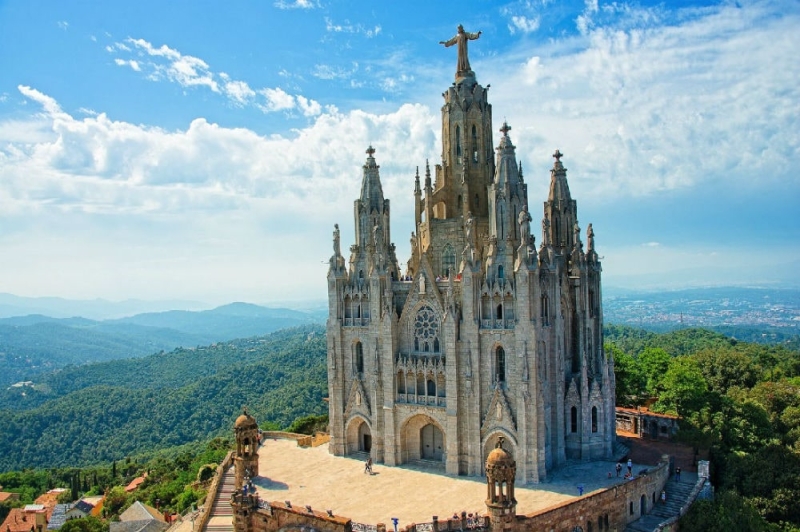
Photo: Emad Aljumah/Gettyimages
You can get to Tibidabo in autumn and winter by metro. It took me about half an hour of waiting at the stop to realize that the same T2 bus, which is written about in all articles and guidebooks, travels only in the summer. The blue tram has now also gone “on vacation.” Instead, there is a bus from the metro station to the funicular.
Your route:
1. Take metro line L7 to the final station Av.Tibidabo.
2. On the right side of the metro exit, go to the stop, take bus number 196 and arrive directly at the funicular to Tibidabo. A ticket for the funicular is purchased separately and costs 7.7 euros in both directions.
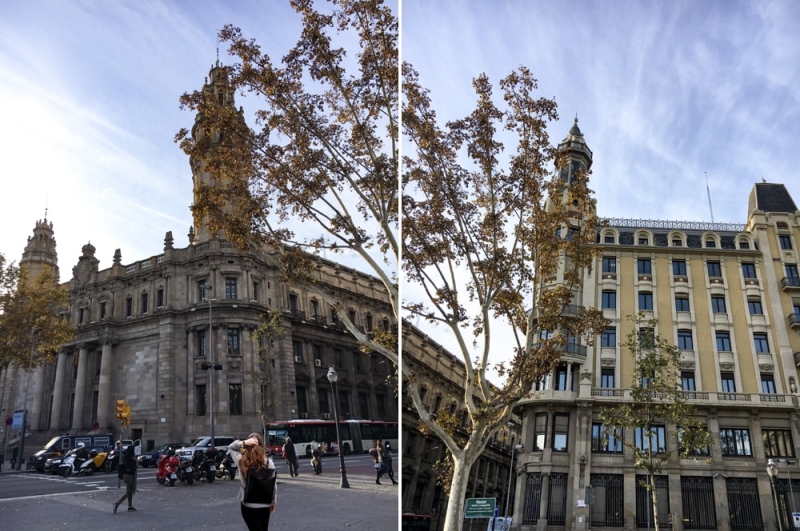
I spent the last 12 hours remaining before the plane home to complete a special task from OneTwoTrip – I had to arrange a tasting of Christmas treats at the main fair of the city – Fira de Santa Llucia. It was then that something happened that I did not expect at all: neither at this fair, nor at the other two, did I find any hints of treats or any food at all! I had to improvise and carefully study the goods on the stalls.
Very quickly, attention was drawn to souvenirs in the form of logs of different sizes on legs with drawn eyes and a smile, decorated with red caps. And then – a stand completely filled with hundreds of figurines – from comic book characters to politicians and football players, in rather racy poses.
Meet the good old Catalan Christmas symbols – Caganer and Cagatio (or Tio de Nadal).
In Catalonia, it is customary to give these figurines to each other for Christmas. It is believed that kaganers bring good luck and success to their owners. At the same time, the tradition also serves as a model of folk satire – anyone can be depicted in the image of kaganers – from peasants to those in power, which in such an unusual way proves the equality of all people.
Cagatio performs a different function – at Christmas he gives gifts to children. According to the same ancient tradition, on December 8, the Day of the Immaculate Conception of the Virgin Mary, they choose a log, put a hat on it, draw eyes on it, cover it with a blanket so that it does not freeze, and begin to “feed”. A dish is placed in front of him, where candies, waffles, tangerines, oranges and other sweets are placed.
On Christmas evening, December 24, the children expect that Tio will return to them all the good that they did for him (this, of course, does not happen) and, offended, the children take wooden batons and begin to knock gifts out of Tio, singing a cheerful song a song, the meaning of which is to get as many gifts as possible to fall out of the log, which happens to everyone’s joy.
Tio gives children only small gifts, but large ones are brought by Papa Noel – the Spanish Santa Claus or the Magic Kings – Christmas wise men.
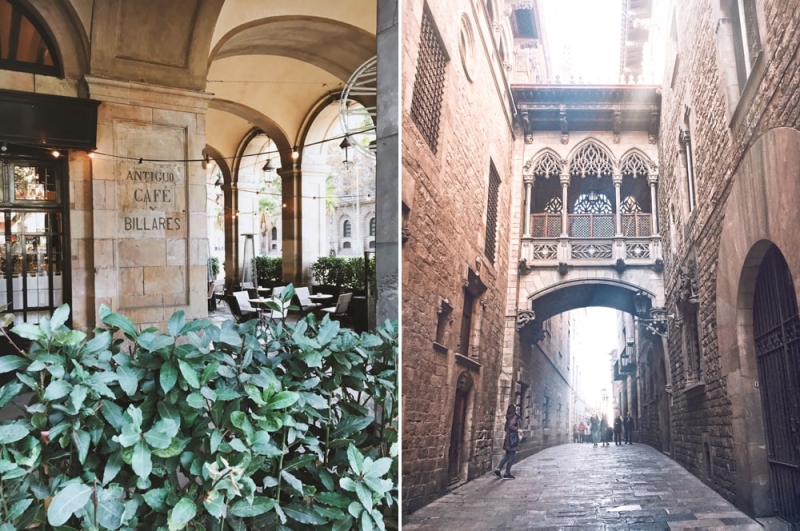
If you still don’t know where to go in late autumn, feel free to decide on Barcelona. This is the sea, and warm weather and, most importantly, the spirit of the coming Christmas. And my advice – be sure to visit these places in Barcelona:
1. Mount Tibidabo – from here the city is clearly visible and you can take a panoramic photo as a souvenir.
2. Barceloneta and the Olympic Village. Barceloneta is a beautiful promenade and the city’s most popular beach next to the Olympic Village area, which was built to host the 1992 Summer Olympics. Here is the only casino in the city, numerous cafes, nightclubs and bars.
3. La Rambla and the Gothic Quarter are the main promenade of the city, 1.2 kilometers long. From the Rambla you can get to the Gothic Quarter, the oldest part of the city. This is where Barcelona was born.
4. Mount Montjuic – this is actually not a mountain, but a hill, and there are several interesting attractions in the city: the Magic Fountain, the National Museum of Art of Catalonia, the Mossen Costa i Llobera Gardens, the Spanish Village, the Barcelona Olympic Ring, the Joao Foundation Museum Miro, Montjuic Fortress.
5. The Temple of the Sagrada Familia (Sagrada Familia) is the legendary and most recognizable building of Antoni Gaudi, built for more than 130 years. Construction is scheduled to be completed in 2026.
6. Park Güell is another creation of Gaudi. This park is unlike any other: there is not a single straight line in the architecture and landscape (everything as Senor Gaudi loved).
Thank you One Two Trip for a magical weekend.
If you have more than 1000 subscribers on one of the social networks, participate in the Kudablin project, and we will send you anywhere on the planet at our expense. Where you will go and what you will do will be decided by your subscribers.
Travel is closer than you think. Apply to Project Kudablin and you might be the next one to go on an adventure!
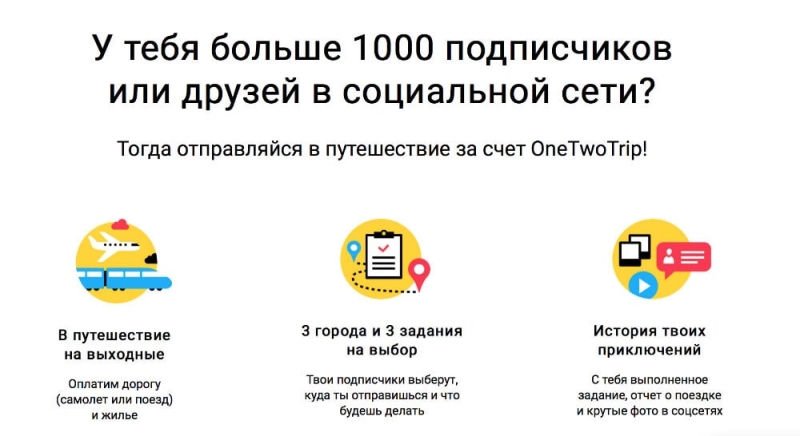
Author of text and photo: Anna Frolova (@mrsannief)
Preview photo: unsplash.com

